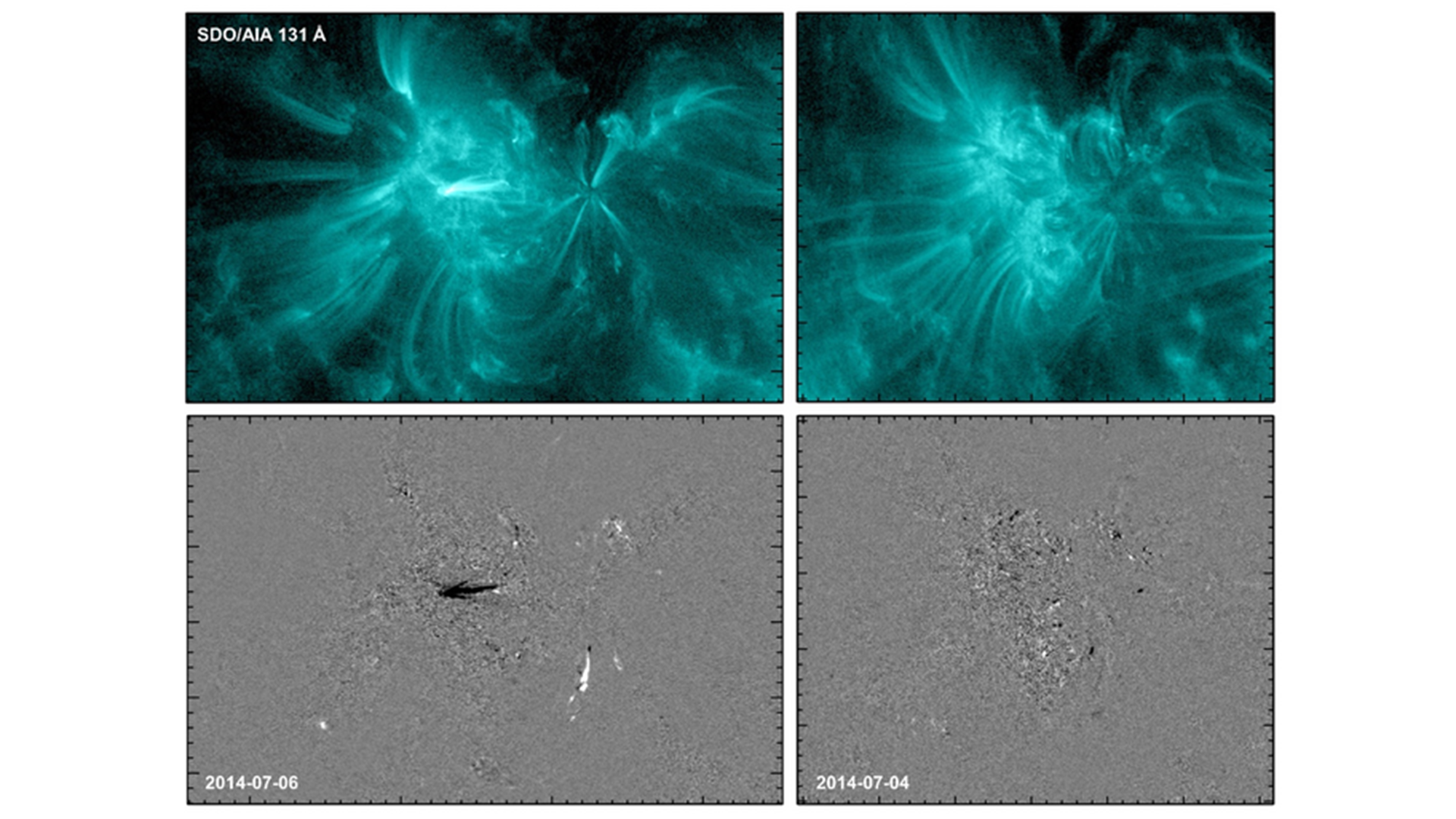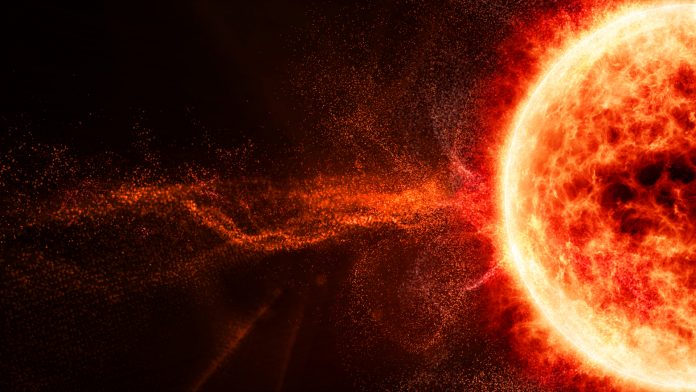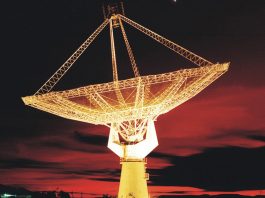Researchers from NorthWest Research Associates have identified new signals from the Sun’s atmosphere that may help to predict when the next solar flare will occur.
By employing data from NASA’s Solar Dynamics Observatory (SDO), the team discovered signals in the upper layers of the solar atmosphere – the corona – that could help to forecast which regions of the Sun will produce a solar flare. They discovered that above the regions about to flare, the corona emitted small-scale flashes that resembled small sparklers before a big firework.
What is a solar flare?
Solar flares are enormous, energetic bursts of light and particles from the Sun that occur when energy stored in twisted magnetic fields is released. Solar flares heat material to millions of degrees in mere minutes, producing a burst of radiation across the electromagnetic spectrum – from radio waves to x-rays and gamma rays.
The three categories of solar flares are classified based on their brightness and x-ray wavelengths: X-class flares (the biggest), M-class flares (medium-sized), and C-class flares (the smallest). Solar flares can impact Earth in several ways, producing auroras, endangering astronauts, disrupting radio communications, and causing large electrical blackouts worldwide.
How can analysing the Sun’s corona improve predictions?
Previous studies investigated how the lower layers of the Sun’s atmosphere, including the photosphere and chromosphere, can help predict solar flare activity in active regions, usually marked by sunspots, or strong magnetic regions on the Sun’s surface that appear darker and cooler. However, examining the corona elevates predictions to new heights.
KD Leka, the lead author of the study and a designated foreign professor at Nagoya University in Japan, explained: “We can get some very different information in the corona than we get from the photosphere, or ‘surface’ of the Sun. Our results may give us a new marker to distinguish which active regions are likely to flare soon and which will stay quiet over an upcoming period of time.”
NASA’s Solar Dynamics Observatory reveals Sun’s activity
The team made their discovery by utilising a newly created image database of the Sun’s active regions captured by SDO, which combines more than eight years of images taken of active regions in ultraviolet and extreme-ultraviolet light.
Karin Dissauer, the leader of the database project, commented: “It’s the first time a database like this is readily available for the scientific community, and it will be very useful for studying many topics, not just flare-ready active regions.”

The NWRA examined a large sample of active regions from the database, employing statistical methods to identify small flashes in the corona before each solar flare. The discovery provides scientists with a deeper understanding of the physics occurring in magnetically active regions, help to understand space weather, and may develop an advanced tool for predicting solar flares.
Dissauer concluded: “With this research, we are really starting to dig deeper. Down the road, combining all this information from the surface up through the corona should allow forecasters to make better predictions about when and where solar flares will happen.”
The study, ‘Properties of Flare-imminent versus Flare-quiet Active Regions from the Chromosphere through the Corona. II. Nonparametric Discriminant Analysis Results from the NWRA Classification Infrastructure (NCI),’ is published in The Astrophysical Journal.









